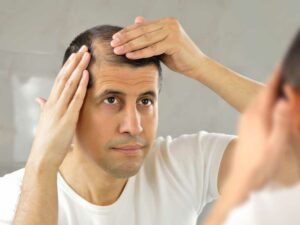If it’s one thing I hear over and over again, its people asking whether they can get good results from hair transplants. Unfortunately, the question is not as simple as that. I’m not going to touch the whole issue of whether transplants as a whole are good or bad. This is about whether you, assuming you know you want to get a hair transplant, would make a good candidate for a hair transplant surgery. It’s not as easy as you might think.
Let me first say that whenever you go to get a consultation from a transplant, every doctor should be telling you these things, and the responsible ones will (although they may leave out some of the things that obviously don’t apply directly to you). It is a doctor’s duty to inform you of the positive and negative (especially the negative) things you have going for you or against you when it comes to transplants. Regardless of his responsibility, it is better to know these things beforehand so you don’t get caught by surprise and so you can compare what you know to what the doctor says.
Hair Transplant Factors
The most important, critical factor is your expectation. If you expect to have the hairline of a teenager, you are asking for disappointment and bad results. A man’s hairline naturally recedes a little with age. Beyond that, you need to know how bald you will get and what sort of coverage you want. Look at your uncles, father, and grandfathers. How bald did they get? Take the one that is the baldest, and assume that will be you. You have to plan for the worst. Now if all of them are balding, but they only have limited balding into old age, that’s great news, because it means you will probably be like them, and you can plan to not need as much in transplants. If they’re all bald as an egg, you’ve got a problem. Even the best doctor can’t give you a full head of hair if you go extensively bald. There is a limited amount of hair, so you have to figure out what you want to do before you ever begin. If you don’t plan and expect a thick, full head of hair and then go very bald, you are in big trouble if you’re only half way done and run out of hair to transplant. That’s why it pays to be conservative, and if you are not sure of how bald you will be, to wait.
The second most important factor is age. This is a big catch-22. Younger men are often the most desirous of transplants to improve their hairline because it affects them the most in terms of social life and their self-esteem. The problem is this is generally the worst age to get a transplant. The only case in which this is not so is in the case mentioned in the previous paragraph where all your relatives show very little hair loss even in old age. Unfortunately, typically the younger you go bald, the worse it eventually gets. For example someone who’s lost a lot of his hair in his 20s may be able to get a great transplant then, but eventually he is very likely to be extensively bald, and there may not be enough hair to finish the job. By the time a man is in his late 30s or 40s, it is easier to tell how extensive someone’s hair loss will be. Also, men in their 30s and 40s are generally more financially stable. In many cases, multiple hair transplants will probably be required, and the worst thing that can happen is stopping along the way and never getting finished.
OK, those are sort of vague, general factors, what about specifics? There are a number of physical traits that determine who is an ideal person for a transplant, among them:
- Is the hair straight, or wavy/curly? Wavy and curly hair looks denser and makes it easier to look like you have more hair than you really do.
- What color is your hair, and how does it contrast with your skin? For caucasian males, blond, gray and light colored hair is the best hair color to have. The reason is that the hair stands out against the skin the least, so the hairline looks the most natural. The worst color is dark hair on light skin, because every hair seems to stand out and any imperfection will also. For black men, since the skin is also dark this is not a problem.
- Amount of hair in the ‘donor’ area. Every person’s hair density is different. The amount of hair you can transplant is limited by the amount of hair you have available at the back of the scalp in the donor area. If your hair is dense, you are able to get many more hairs transplanted and achieve better coverage. If your hair is thinner even in the back, you will need to be more conservative in your approach.
So the ideal candidate is a man in his 40s, who is black or has wavy blond or gray hair, has balded slowly, and whose relatives experienced only limited hair loss. Does that mean someone outside these criteria can’t get a good transplant? No. It just means they should be leery and careful, especially those who are balding rapidly in their 20s.





